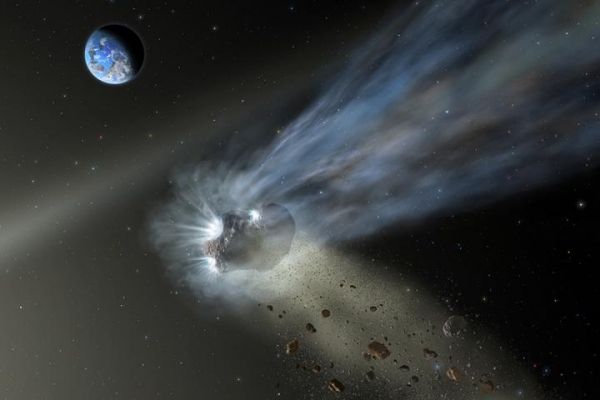In early 2016, an icy visitor from the edge of our solar system hurtled past Earth. It briefly became visible to stargazers as Comet Catalina before it slingshotted past the Sun to disappear forevermore out of the solar system.
Among the many observatories that captured a view of this comet, which appeared near the Big Dipper, was the Stratospheric Observatory for Infrared Astronomy (SOFIA), NASA’s telescope on an airplane. Using one of its unique infrared instruments, SOFIA was able to pick out a familiar fingerprint within the dusty glow of the comet’s tail—carbon.
Now this one-time visitor to our inner solar system is helping explain more about our own origins as it becomes apparent that comets like Catalina could have been an essential source of carbon on planets like Earth and Mars during the early formation of the solar system.
Read more at: University of Minnesota
This illustration of a comet from the Oort Cloud as it passes through the inner solar system with dust and gas evaporating into its tail. SOFIA's observations of Comet Catalina reveal that it's carbon-rich, suggesting that comets delivered carbon to the terrestrial planets like Earth and Mars as they formed in the early solar system. (Photo Credit: NASA/SOFIA/ Lynette Cook)


